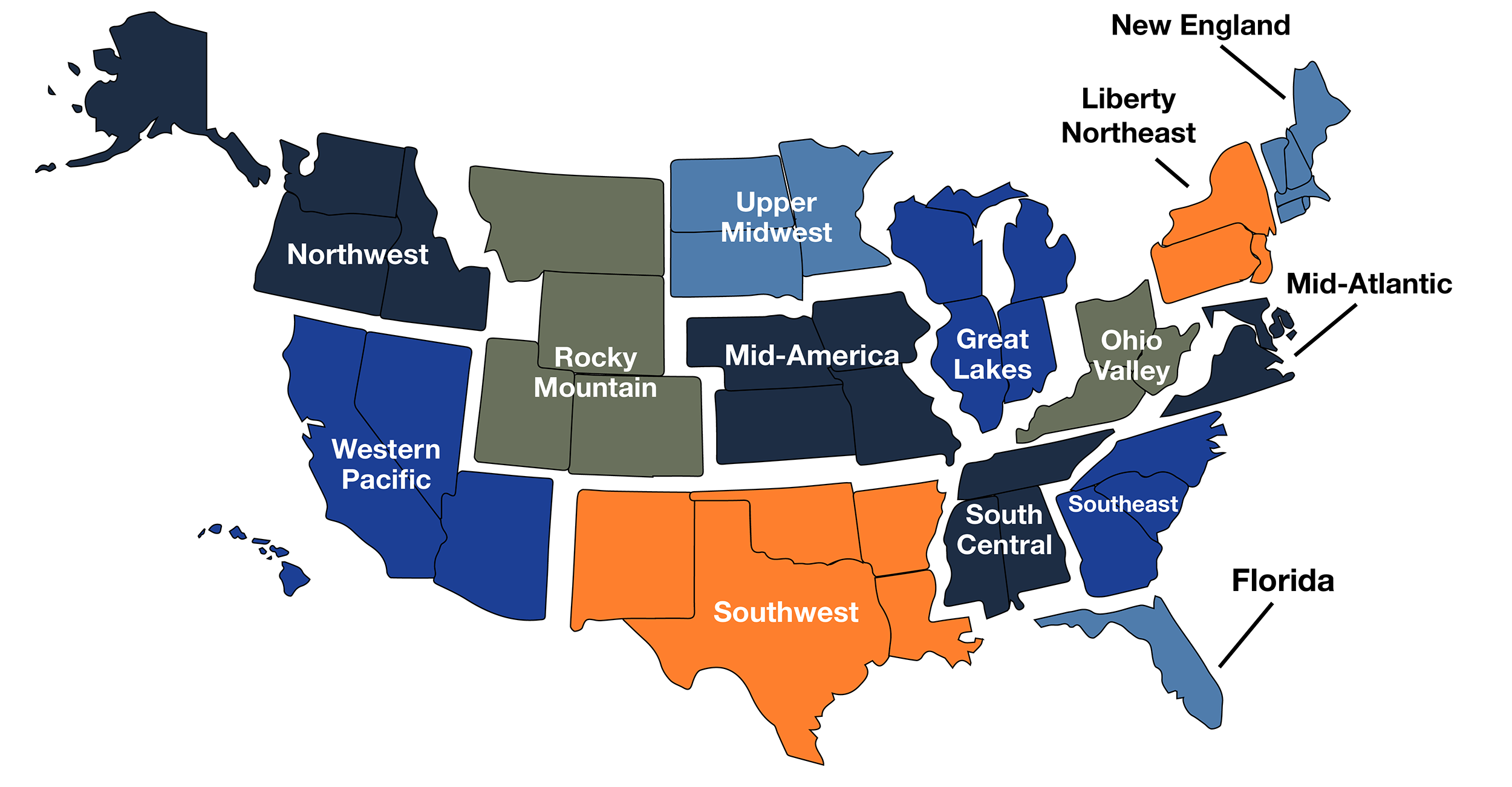Region Events
Whether it’s education, networking or a DBIA conference, there are always opportunities to get involved with your region. See our calendar to find an event near you.
View Region EventsConnect with one of DBIA’s 14 Regions or nearly 50 local Chapters across the country. Your DBIA membership includes membership in your region, which can offer an array of additional programming at the local level, including topic specific education, networking events and awards programs.
Student Chapters
DBIA Student Chapters develop strong working partnerships between students and industry professionals. By preparing the next generation of design-builders, we’re building not just projects, but futures. Designing not just better ways to work, but better networks.
Don’t see your school in the list of DBIA’s current Student Chapters? Learn more about how to establish a chapter at your school.

State: FL
Chapters: Central, Gulf Coast, Northeast, South Florida
Contact: Karen Wallace, Executive Director
States: IN / IL / MI / WI
Chapters: Central Indiana, Chicago, Michigan, Wisconsin
Contact: Michelle Travis, Executive Director
States: DE / NJ / NY / PA
Chapters: Alleghenies, New York City, Tristate, Upstate
Contact: Kim Gaylord, Executive Director
States: IA / KS / MO / NE
Chapters: Iowa, Kansas, Kansas City, Nebraska, Ozarks, St. Louis
Contact: Sara Jacobson, Executive Director
States: DC / MD / VA
Chapters: Central Virginia, Hampton Roads, Maryland
Contact: Mac Cannon, Executive Director
States: AK / ID / OR / WA
Chapters: Inland, Oregon, Western Washington
Contact: Carissa Linnane, Executive Director
States: CO / MT / UT / WY
Chapters: Montana, Utah, Wyoming
Contact: Amanda Faith, Executive Director
States: AR / LA / NM / OK / TX
Chapters: Albuquerque, Arkansas, Austin, Dallas Fort Worth, El Paso, Houston, New Orleans/Baton Rouge, Oklahoma City, San Antonio, Tulsa
Contact: Rachel Albright
States: AZ / CA / HI / NV
Chapters: Arizona, Bay Area, Hawaii, Los Angeles/Orange County, Nevada, Sacramento, San Diego
Contact: Gloria Moore, Executive Director
